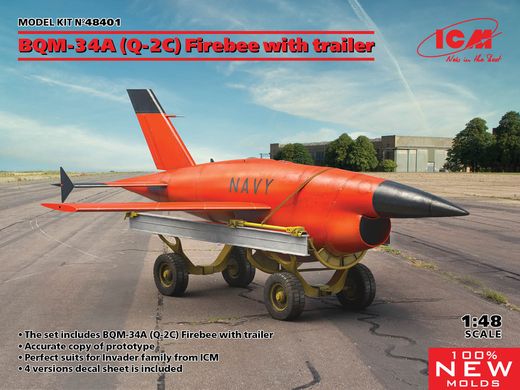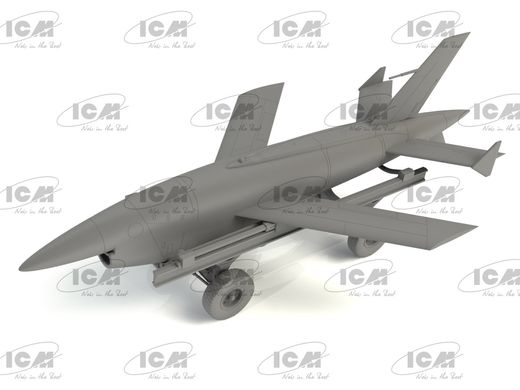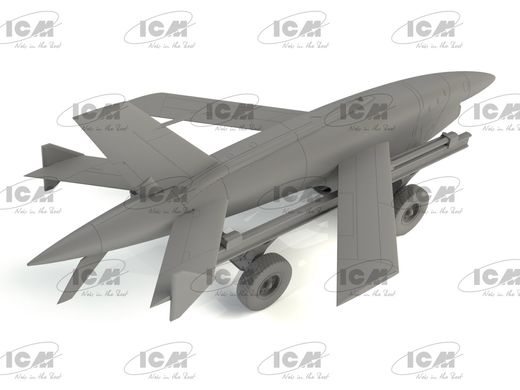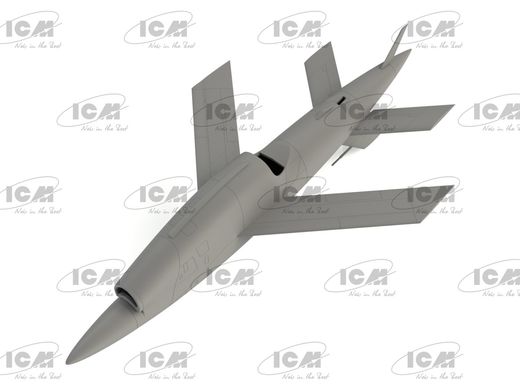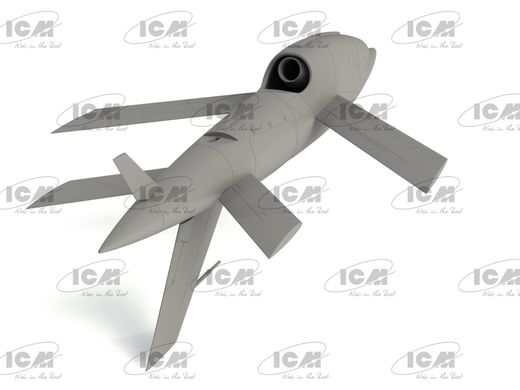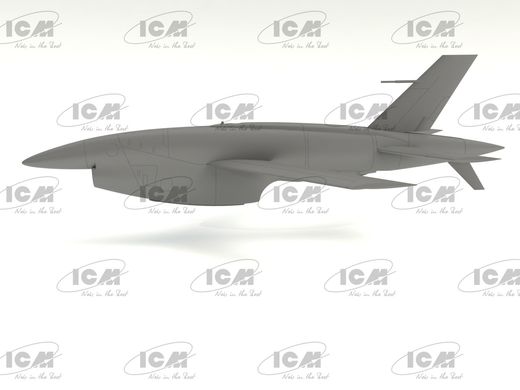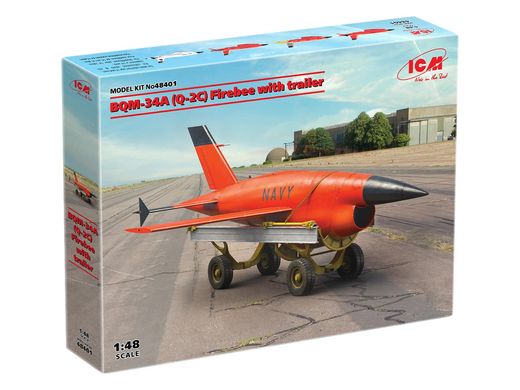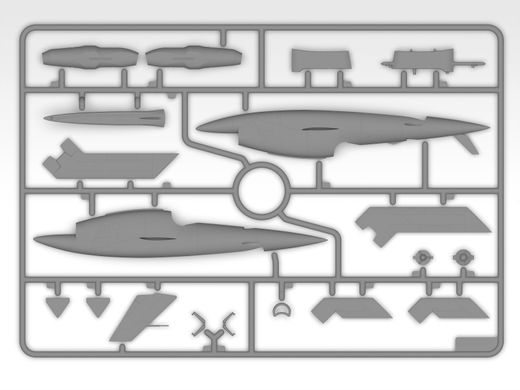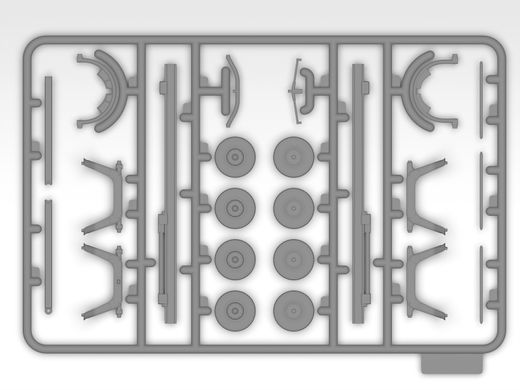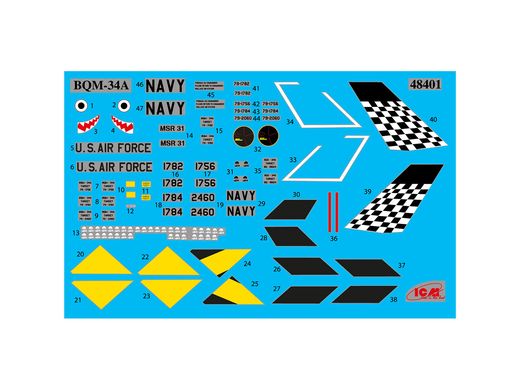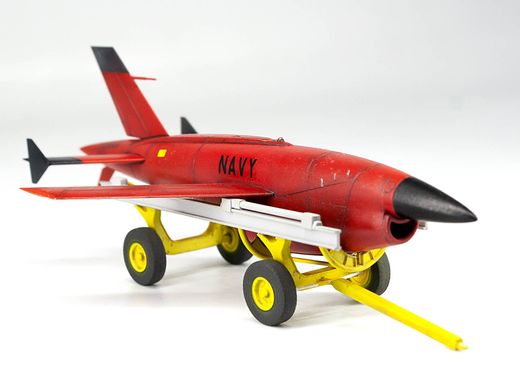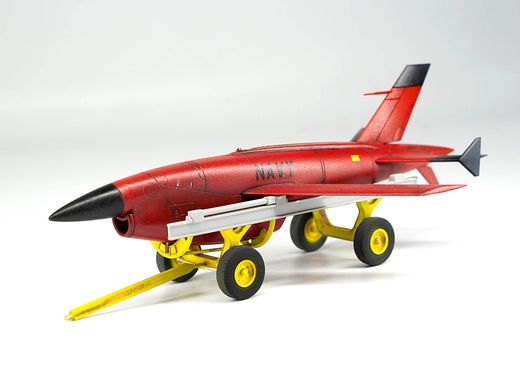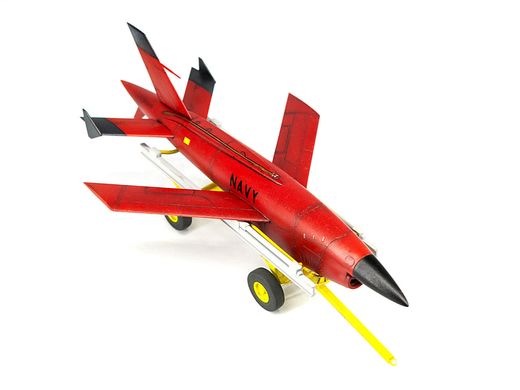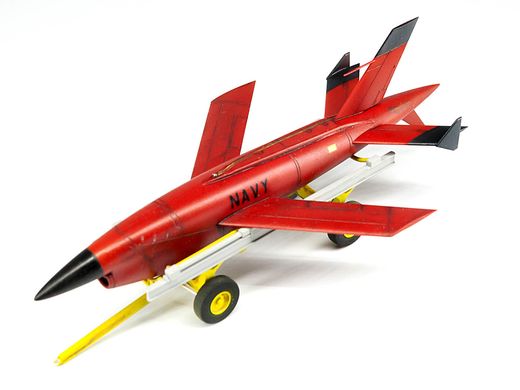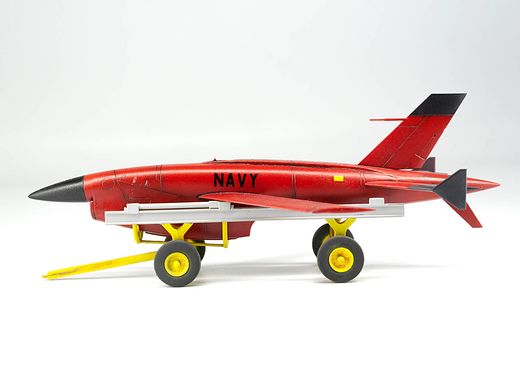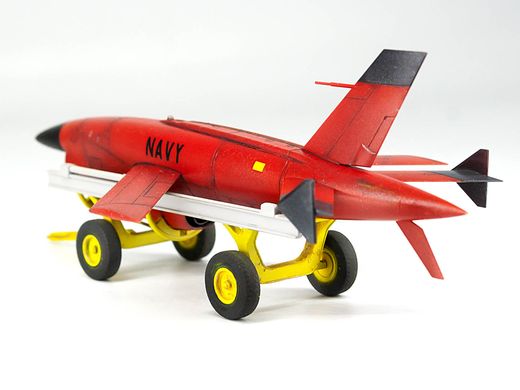BQM-34A (Q-2C) Firebee with trailer
In the late 1950s, the USAF contracted with Ryan for a substantially improved "second generation" Firebee, the Model 124, initially designated the Q-2C. The first prototype made its first flight in late 1958 and went into production in 1960. In 1963, it received the name BQM-34A. The old first-generation KDA-1 and KDA-4 targets, which were still flying in the Navy at the time, were (somewhat inexplicably) designated AQM-34B and AQM-34C respectively. The BQM-34A originated as the Firebee, as it is called today, with a larger airframe, longer wings and a distinctive "chin" type intake under the pointed nose (as opposed to the round air intake of the first generation Firebee). It was powered by a Continental J69-T-29A turbojet engine, a copy of Marbore's improved Turbomeca Gourdon model, with a thrust of 1,700 lbf (7.6 kN). The US Navy also adopted the BQM-34A, while the Army received a land-based version called the MQM-34D with longer wings and a heavier JATO booster. A distinctive feature of the second generation Firebee is that some photos show it with triangular endplates on the tailplane, while others have no endplates but a ventral fin under the tail, and still others have neither endplates nor a ventral fin. As most modern photographs of Firebees show the ventral fin, this may have been due to production changes or later retooling (reference sources are unclear on this). In 1960, the first stealth technology was pioneered by the US Air Force by reducing the radar cut of the Q-2C drone. This was achieved with specially designed screens above the air intake, radiation absorbing material on the fuselage and special radar absorbing paint.















